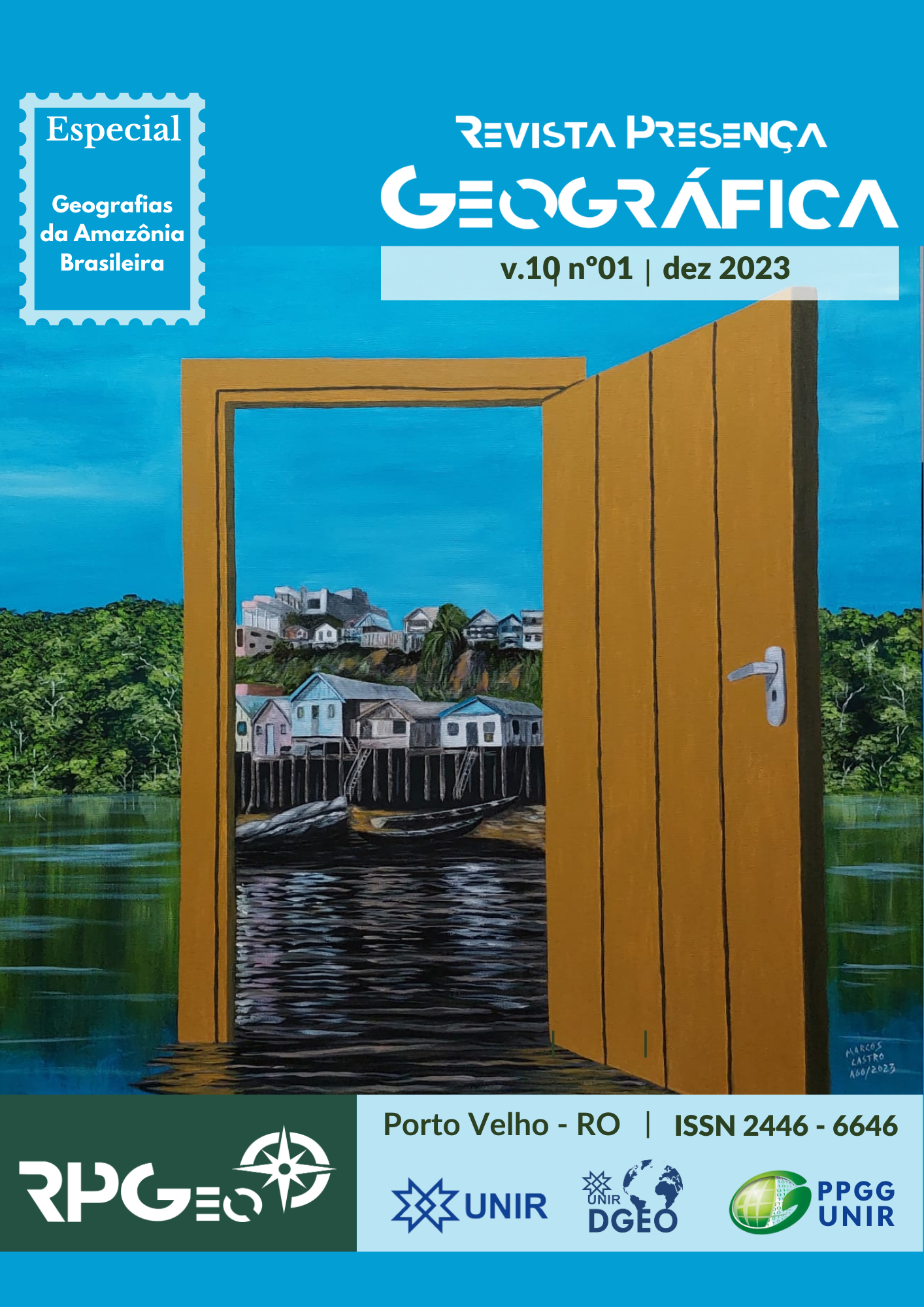CHARACTERIZATION OF PH, TOTAL DISSOLVED SOLIDS, ELECTRICAL CONDUCTIVITY AND DISSOLVED OXYGEN IN THE LOWER TARUMÃ-AÇU RIVER (AMAZONAS, BRAZIL)
DOI:
https://doi.org/10.36026/rpgeo.v10i1.7318Abstract
This study aimed to characterize the water quality of the lower course of the Tarumã-Açu River, based on the variables: hydrogen potential (pH), total dissolved solids (TDS), electrical conductivity (EC) and dissolved oxygen (DO). To achieve this objective, the qualitative and quantitative methodological approach was used. The samples were collected and analyzed in loco, on March 11, 2020, the hydrological period of flooding on the Negro River. The water collected in the subsurface (-15 cm) in the 18 sampling stations of the Tarumã-Açu River showed less acid characteristics, with an average pH of 5.35±0.25, low concentration in the TDS, with an average of 4.06±0 .87 mg/L, low EC, with a mean of 8.11±1.49 μS/cm and higher concentration of DO, with a mean of 6.03±0.47 mg/L. However, the deep waters (-4 meters) showed more acidic characteristics, with an average pH of 4.87±0.34, low concentration in the TDS, with an average of 5.61±2.45 mg/L, low EC , with a mean of 10.72±3.71 μS/cm and lower DO concentration, with a mean of 3.17±1.98 mg/L. Concerning the characterization of the banks of the Tarumã-Açu river, it was observed that the Igarapés1 of Mariano, Bolivia and Gigante, located on the left bank of the main channel, contribute to the release of pollutant load in the Tarumã-Açu river basin. Given the above, the results indicate that there are favorable conditions for the dilution of dissolved solids in the lower sector of the watershed. negative consequences from anthropic action.
Downloads
Published
Issue
Section
License
Copyright (c) 2023 Bianca Silva de Souza, Flávio Wachholz, Waterloo Pereira Filho

This work is licensed under a Creative Commons Attribution-NonCommercial-NoDerivatives 4.0 International License.
This work is licensed under Creative Commons Attribution-NonCommercial-NoDerivatives 4.0 Internacional license.
Authors who publish in this journal agree to the following terms:
- Authors retain the copyright and grant the journal the right to first publication, with the work simultane ously licensed under Creative Commons Attribution-NonCommercial-NoDerivatives 4.0 Internacional License that allows the sharing of the work with acknowledgment of authorship and initial publication in this journal.
- Authors are authorized to assume additional contracts separately, for non-exclusive distribution of the version of the work published in this journal (ex, publishing in institutional repository or as a book chapter), with acknowledgment of authorship and initial publication in this journal.
- Authors are allowed and encouraged to publish and distribute their work online (ex.: in institutional repositories or on their personal page) at any point before or during the editorial process, as this can generate productive changes, as well as increase the impact and the citation of the published work (See The Free Acess Policy).












